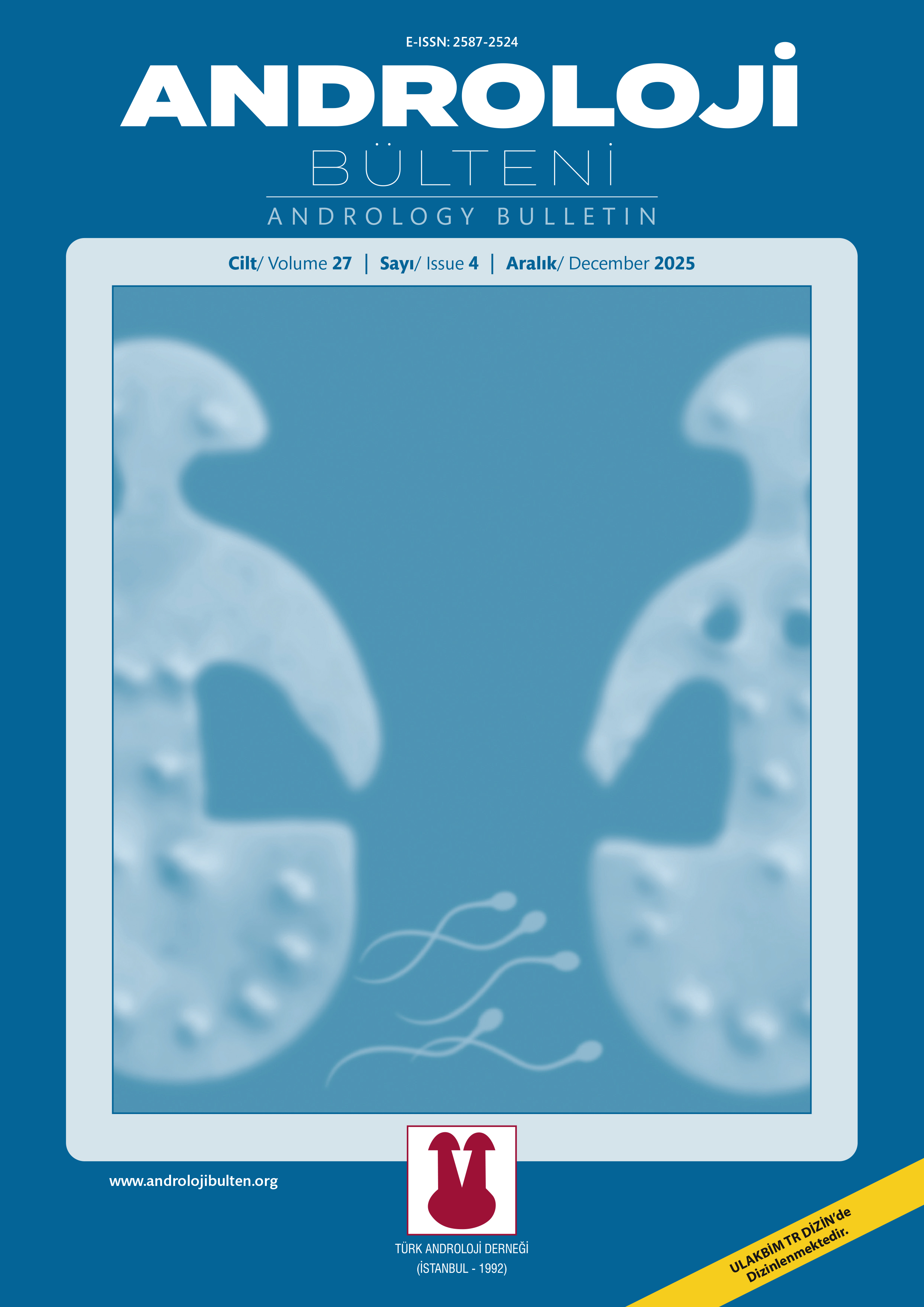
Content of this journal is licensed under a Creative Commons Attribution-NonCommercial 4.0 International License.
What are the effects of complete blood counts and glycemia on sperm retrieval in micro-TESE procedure?
Bahadır Topuz, Turgay Ebiloğlu, Selçuk Sarıkaya, Engin Kaya, Adem Emrah Coğuplugil, Selahattin BedirGülhane Training and Research Hospital, Department of Urology, AnkaraOBJECTIVE: To study the prognostic significance of some complete blood counts parameters and serum glucose level in predicting the presence of sperm in microsurgical testicular sperm extraction (micro- TESE) procedure.
MATRERIAL and METHODS: The data of 56 patients who underwent micro- TESE procedure due to non-obstructive azoospermia (NOA) between January 2017 and March 2020 were retrospectively analyzed. The data of the patients included in the pre-anesthesia evaluation were recorded. Complete blood count parameters, serum inflammation markers obtained by the ratio of these parameters (neutrophil/lymphocyte ratio, platelet/ lymphocyte ratio) and serum fasting glucose levels were examined.
RESULTS: The mean age of patients was 33.28±4.4 (22–44) years. Our total sperm retrieval rate was 55.4% (n: 31). When the effect of complete blood count parameters and glycemia on sperm retrieval in micro-TESE procedure was examined, only the white blood cell, platelet, neutrophil and monocyte count were found to be statistically significant (respectively, p=0.03; p=0.04; p=0.008; p=0.007)
CONCLUSION: According to our study, we showed that neutrophil/ lymphocyte ratio and platelet/lymphocyte ratio, which are markers of systemic inflammation, do not predict sperm retrieval in micro-TESE. We found that the levels of white blood cells and neutrophils, which are inflammatory cells, were statistically higher in the sperm-presence group. We have also shown that serum glucose level does not affect sperm retrieval.
Keywords: Glucose, inflammation markers, micro-TESE, nonobstructive azoospermia, complete blood count
Tam kan sayımı ve gliseminin mikro-TESE prosedüründe sperm elde etme üzerine etkisi nedir?
Bahadır Topuz, Turgay Ebiloğlu, Selçuk Sarıkaya, Engin Kaya, Adem Emrah Coğuplugil, Selahattin BedirGülhane Eğitim ve Araştırma Hastanesi, Üroloji Anabilim Dalı, Ankara, TürkiyeAMAÇ: Mikrocerrahi testis sperm ekstraksiyonu (mikro-TESE) prosedüründe sperm varlığını tahmin etmede bazı tam kan sayım parametreleri ve serum glikoz düzeyinin prognostik önemini incelemek.
GEREÇ ve YÖNTEMLER: Ocak 2017 – Mart 2020 tarihleri arasında non-obstrüktif azospermi (NOA) nedeniyle mikro-TESE işlemi uygulanan 56 hastanın verileri geriye dönük olarak incelendi. Hastaların anestezi öncesi değerlendirmede yer alan verileri kaydedildi. Tam kan sayımı parametreleri, bu parametrelerin birbirine oranı ile elde edilen serum inflamasyon belirteçleri (nötrofil/lenfosit oranı, platelet/lenfosit oranı) ve serum açlık glukoz seviyeleri incelendi.
BULGULAR: Hastaların ortalama yaşı 33,28±4,4 (22–44) yıldı. Toplam sperm elde etme oranımız %55,4 (n: 31) idi. Tam kan sayımı parametrelerinin ve gliseminin mikro-TESE prosedüründe sperm elde etme üzerine etkisi incelendiğinde sadece beyaz küre, platelet, nötrofil ve monosit sayısının istatistiksel olarak anlamlı olduğu tespit edildi (sırasıyla, p=0,03; p=0,04; p=0,008; p=0,007).
SONUÇ: Çalışmamıza göre sistemik inflamasyon belirteci olan nötrofil/ lenfosit oranı ve platelet/lenfosit oranının mikro-TESE’de sperm elde etmeyi öngörmediğini gösterdik. İnflamasyon hücreleri olan beyaz küre ve nötrofil düzeyinin sperm elde edilen grupta istatistiksel olarak daha yüksek çıktığını saptadık. Ayrıca serum glukoz düzeyinin sperm elde etmeyi etkilemediğini gösterdik.
Anahtar Kelimeler: Glukoz, inflamasyon belirteçleri, mikro-TESE, non-obstrüktif azospermi, tam kan sayımı
Manuscript Language: Turkish
(901 downloaded)













